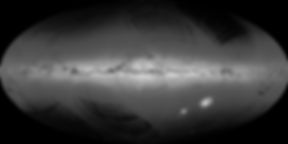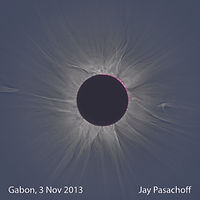
Gaia: science essays
In these short (mostly 2-page) weekly 'essays', I have picked out some of the scientific highlights of the Gaia mission as they are emerging, or as they caught my attention. They are not necessarily the most important. They do not follow any specific sequence. They are not a complete review of a given topic. Many will be quickly superseded by new results. But they offer a snapshot of some of the discoveries that Gaia is making across all of astronomy. I've also included some essays on related topics, including the history of astrometry, and some more technical, managerial, or developmental aspects of both the Hipparcos and Gaia missions. In each, I have included a footnote DR1, DR2, EDR3, DR3, etc to indicate which of the (latest) data releases the essay refers to (described in essays #10 and #76), with DR0 signifying technical or historical material not connected with any specific data release. Who are they written for? Anyone who might have a general interest in science and astronomy, including amateur astronomers, young scientists starting out on their careers, mid-career scientists looking in on Gaia for the first time to get a feeling of what is possible, and specialists looking in from different areas of astronomy, or physics more generally. My thanks go to many people: to all those I worked with on the Hipparcos and Gaia projects over almost 30 years, to those now dedicating huge reserves of their time, energy, and skill to the ongoing data processing, and to those who have entered into the Gaia catalogue and published the results described here. Click on the access PDF icon to access the file. Only a few references are included, and these are 'discreetly' hyperlinked for those who want to read more... where references appear in the form (Einstein 1908) or www.gaia.com, clicking on the text (even though generally not highlighted!) should lead to the relevant online article. In a few cases, I've recorded an interview on the subject (see science interview page).
New: this Gaia Science Tree (v1.1, July 2024) presents essays 1–182 (Jan 2021–Jun 2024) as a hyperlinked "mind map"
* all end-nodes are hyperlinked to the given essay number (you will need to point to "just below" the essay number) * it does not cover *all* Gaia science, but only topics where I have written a weekly essay (starting in January 2021) * the node title generally signifies the main topic of the cited essay, but can point to essays where it is part of a broader subject * catalogue content topics are at top right, background material at bottom left, otherwise moving "outwards" clockwise in the diagram * each weekly essay is posted on this www site, and they point to pdf files hosted by this www site * a "legacy" copy of each essay is also posted at CERN's Zenodo data archive; I update these only occasionally (every 6 months) * my BAAS "Gaia science through 2023", 2024BAAS...56a.008P, includes essays to end 2023 (1-156), and points to the Zenodo files * this "Gaia Science Tree" also points to the Zenodo files * I would be grateful to hear of any issues with this version (e.g. incorrect links) * I would also be pleased to receive suggestions for important Gaia results that I have not covered so far * I have prepared this as a didactic tool. Please feel free to make use of it as you wish
New: This table page lists all essays, now updated through to the end of June 2024 (1–182 inclusive), in tabular form
Please make use of this subscribe page to receive an email (usually Monday) when each new essay is published
Essays through to the end of 2023 (1–156 inclusive) also appear in a hyperlinked indexed form in the Bulletin of the American Astronomical Society (BAAS Vol. 56, Issue 1, 15 March 2024): ADS 2024BAAS...56a.008P
202. Update on science alerts
A treasure chest of strange and unexplained objects
I introduced the topic of Gaia's Science Alerts in essay 36 (Sep 2021), when the archive contained some 5000 classified sources. Today, it lists more than 25,000 events (more than 10 a day), with 7000 assigned to 23 classes. I describe some of these interesting objects: including exotic supernovae, tidal disruption events, and Gaia's first microlensing planet.
11 November 2024

201. Young stellar objects
Many more discoveries including some rare outburst events
YSOs represent the earliest stages of star formation, with the term embracing the protostar and subsequent pre-main-sequence phases. The variability analysis as part of Data Release 3 has identified 80,000 YSO candidates (40,000 new), while the Science Alerts pipeline is discovering more of the rare FU Ori and EXor accretion-driven outburst events.
4 November 2024

200. Chromospheric activity
Huge new catalogues of stellar activity
Chromospheric activity originates as part of the cyclic regeneration of a star's large-scale magnetic field. Various spectral lines provide diagnostics of its physical conditions. Gaia DR3 provides the largest database to date of activity in the Ca II infrared triplet lines measured by Gaia's Radial Velocity Spectrometer.
28 October 2024

199. Searching for the Cetus stream
How to search for stellar streams
I summarise the main approaches that are being used to search for stellar streams, the tidal remnants of galaxies captured by our own, then look more in details at the complex Cetus-Palca stream, an example of a dwarf galaxy that has undergone several periods of stripping, leaving behind debris at multiple locations in the Galaxy halo.
21 October 2024

198. The Sagittarius stream
A most spectacular accreted satellite galaxy
The Sagittarius dwarf galaxy is a nearby satellite of our own, discovered only 30 years ago. Tidally distorted, with dramatic and extensive preceding and trailing tidal streams, it is inferred to have completed several close orbits around the Milky Way. It provides a most striking example of galaxy disruption and ongoing accretion.
14 October 2024

197. The Gaia Sausage-Enceladus stream
What we know about the Gaia Sausage-Enceladus stream
The gravitational capture by our own Milky Way of a satellite galaxy, some 10 Gyr ago, resulted in the so-called Gaia Sausage-Enceladus stream. The merger had a major effect on our Galaxy halo, where it accounts for more than 20 per cent of the halo's stellar population, and on the disk. I summarise our present knowledge.
7 October 2024

196. The rotation curve of our Galaxy
New findings at all Galactic radii
The rotation curve of our Galaxy provides strong constraints on the mass distribution of its major structural components. New Gaia results suggest a strongly revised dependency within the solar circle, and a steepening Keplerian decline beyond 20 kpc, which may indicate the limits of our Galaxy's dark matter halo.
30 September 2024

195. Imaging of the Galaxy bar
A surprising demonstration of Gaia's ability to image our Galaxy's bar
The detailed morphology of our Galaxy's central bar remains unclear. Estimates still vary concerning its axis ratio, its half-length, and its orientation with respect to the Galactic centre. Here I say more about the attempts and difficulties of elucidating its morphology, and include a surprising demonstration of Gaia's ability to image it.
23 September 2024

194. Cosmological simulations and Gaia
How Gaia is confirming many of their detailed predictions
Over the past 20 years, large N-body simulations, based on the Lambda CDM paradigm, have been developed to investigate how structure in the Universe has evolved over time. I will briefly outline these cosmological models, and show how Gaia is confirming many of their detailed predictions, and helping in their interpretation.
16 September 2024

193. More on wide binaries
Recent Gaia results throw new light on their formation
The origin of wide binary stars remains something of a mystery. In two earlier essays I looked at how Gaia detects them, and at suggestions that their orbits are inconsistent with Newtonian dynamics. Recent Gaia results throw new light on their formation, while researchers are still divided on the very long-period orbits.
9 September 2024
